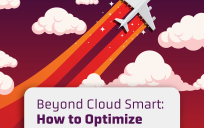![]()
Written in collaboration with Aaron Erickson, Director Government Innovation, Oracle Public Sector North America
There is no doubt that the move to cloud computing is here. But many organizations still struggle with an essential question: What is the best way to get there?
Public service agencies, including those in government, education, and healthcare are always looking for lower-cost and more flexible ways to improve the efficiency, flexibility, operational agility and integrity of their systems. Cloud computing has come to be recognized as both a business and deployment model that enables public sector organizations to achieve these aspirations.
U.S. federal government agencies are implementing cloud computing with the support of the Federal CIO, the Office of Management and Budget and the General Services Administration. Meanwhile, worldwide, governments and local agencies, burdened by budget cuts, a rapidly aging workforce and increased service demand, particularly in health and social care, have initiated several strategies. In the UK the Digital by Default strategy estimates that moving services from offline to digital channels will save between £1.7 and £1.8 billion a year (nearly $2.5 billion USD) while in Australia officials plan with their Digital First policy that by 2020, four out of five Australians will choose to engage with the government through the internet or other types of online service. Similar initiatives are underway in Canada, Japan and many other nations.
Public Sector organizations are facing increased public expectation to access services quickly and conveniently, when and where it suits them. By developing an agency culture that puts citizens’ needs first forces government leaders to plan and design services focused on specific user tasks, and using digital technology to drive improved services at lower costs. Today’s modern agencies are consistent in their approach as they move toward the cloud, and often start by examining two important components:
Business Drivers:
- Improving citizen services and experiences: Many governments are looking for ways to improved, more integrated and targeted services to their constituents, while reducing the long-term cost of delivery.
- Overcoming budget cuts and rising costs: In the current economic climate governments are often faced with declining tax revenue and other income sources, while overall costs are generally rising.
- Innovation demands: Agencies are being asked to provide increasingly personalized solutions across disparate lines of business. And they’re being asked to deliver these innovations more quickly than ever.
IT Drivers
- Reducing escalating operational costs. Agencies want technology that can reduce costs such as maintenance, power, cooling, floor space and staff.
- Enabling process improvement. Deliver functionality that provides improvements in overall costs and effectiveness of government processes.
- Improving service levels: Modern agencies require improved IT performance, availability, security and compliance. Providing smaller upgrades over time can be less disruptive and costly.
Government Journey to Cloud
If you’re reading this blog then you most likely have already started the journey. Hopefully, you have a complete plan that takes into account short- and long-term objectives. The most successful early cloud adopters were able to mix rapid uptake with thoughtful, long-term planning. Cloud computing should be tackled as a strategic plan within your organization to ensure there is the right level of support and business alignment to be successful. I recommend this approach:
- Define the business objectives. Examine the current environment and determine how to cut costs, deliver better services and be positioned to grow.
- Define the cloud strategy. Evaluate transaction, program and policy services that are candidates based on the strategic intent and which organizations will be targeted.
- Create the roadmap. Set strategic direction for cloud adoption within your organization. Establish a framework within which any single project can contribute to the overall goal, allowing multiple projects to progress in parallel yet remain coordinated in pursuit of a common target that provides value greater than the sum of the individual projects.
- Deploy cloud services. Determine the first components of the new operating model. Core decisions on the operating model impact the business case and implementation strategy.
- Achieve new operational efficiencies. Start leveraging new business capabilities to drive process improvement and help users do their job more efficiently.
Moving to cloud does not mean that agencies must replace every single system. Cloud is complementary to existing IT infrastructure. The goal should be to identify which functions and systems could be more efficient in the cloud and would provide the greatest return on investment, and deliver the most business value to users. It is an iterative process,
Everyone’s journey to cloud is slightly different and is typically based on their business and technology environment. Certain steps inevitably will be more challenging than others. Learn from your peers by reading about their successes and challenges. The new GovLoop cloud guide offers a variety federal and state & local examples of agencies successfully making the journey. Creating a blueprint and gaining upfront support is a key part of ensuring you make it across the finish line.
Franco Amalfi is part of the GovLoop Featured Blogger program, where we feature blog posts by government voices from all across the country (and world!). To see more Featured Blogger posts, click here.





Leave a Reply
You must be logged in to post a comment.